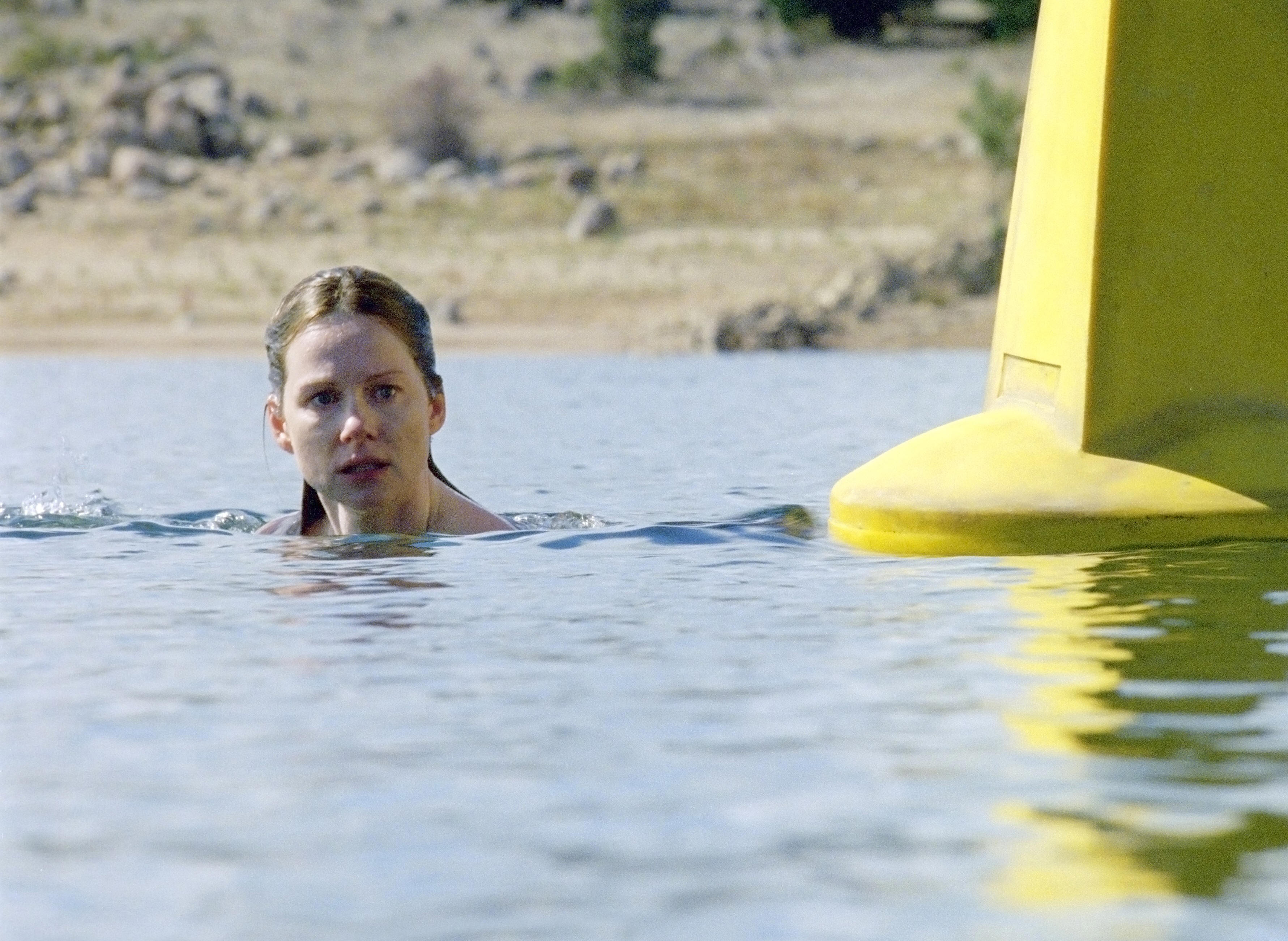
Do The Wrong Thing
The Popcorn Reel Film Review: "Jindabyne"
By Omar P.L. Moore/May 22, 2007

What lies beneath: Laura Linney as Claire Kane in Ray
Lawrence's thought-provoking "Jindabyne", which opened earlier this month.
(Photo: April Films via Sony Pictures Classics)
Near the start of Ray Lawrence's penetrating and powerful "Jindabyne" a cheery
script greets the eye of any visitor to the small northwestern Australia town of
the film's title: "Welcome to Jindabyne -- A Tidy Town."
The trouble with that greeting is that the town of Jindabyne has a lot of dirty
laundry, much of which several of its residents has trouble airing. One of
the casualties washed up in that laundry is a woman from the Aboriginal group --
the original landowners and residents of Australia, now violently supplanted and
marginalized by British colonial invasion and rule. The woman has been
violently attacked and we see only the end result of this atrocity -- her
floating corpse in the river.
The film seems to be a flashback, even though it is not obviously marked that
way. The beautiful mountains and expanses are references to a crime of the
recent past, or a voice of the deceased crying out. The water and
mountains frame the void that four men fish in and when Stewart Kane (Gabriel Byrne)
comes across a very big fish in this pond, a moral crossroads begins from which
there is no turning back. What Stewart and three fishing buddies do or
don't do runs through the heart of this quiet, meditation of right, wrong,
secrets and lies. Fishing is both a perfect analogy for the hunters and
the hunted. What does one pick up and what does one leave behind?
One of the fishers says: "We found a body. I caught the most amazing fish
though."
In "Jindabyne" a marriage is in trouble, an in-law relationship is frayed with
tension, and friendships are tested beyond the murky and mournful waters.
Nature predominates the irrelevance of human beings, but the humans always
attempt
to give "the old college try" to sticking it to nature, and natural law.
At the heart of "Jindabyne" are some great topics for debate. The issues
of how white societies regard black lives (specifically and especially a black
woman's life) and the behavior towards the news (or discovery) of a deceased
black person. Questions like the following lay begging to be asked in "Jindabyne",
such as, what is the price of a black person's life? A fish? More?
Less? The life of a white person? This film strikes deep at the
heart of perceptions of race, racism, inhumanity and sexual torture, and does a
fascinating thing: looks at the double edge of that imbroglio, via the
reflection of the very morbid waters that the group of white men fish in. We
see the mirror being held up to the provincial and fearful white community of
the quiet northern Australia suburb, swirling in a cesspool of doubt,
dysfunction and immorality.
Ray Lawrence's film is extraordinarily timely and just two years ago racial
violence spread across parts of suburban Australia like wild fire, where many
Muslims and some blacks were beaten indiscriminately. (Cate Blanchett made
an appeal to end the violence when she was there at the time, and spoke out
against racism.) "Jindabyne", which screened at the San Francisco
International Film Festival earlier this month and in April is filled with taut
performances, especially from Laura Linney (as Claire, Stewart's wife) and Gabriel Byrne and leaves
audiences with more than a few things to discuss and think about.
"Jindabyne" is rated R by the Motion Picture Association of America for
disturbing images, language and some nudity. The film's duration is two
hours and two minutes.
Copyright The Popcorn Reel. PopcornReel.com. 2007. All Rights
Reserved.